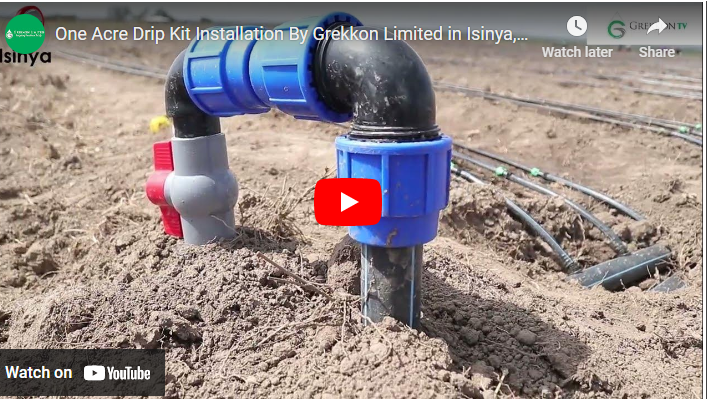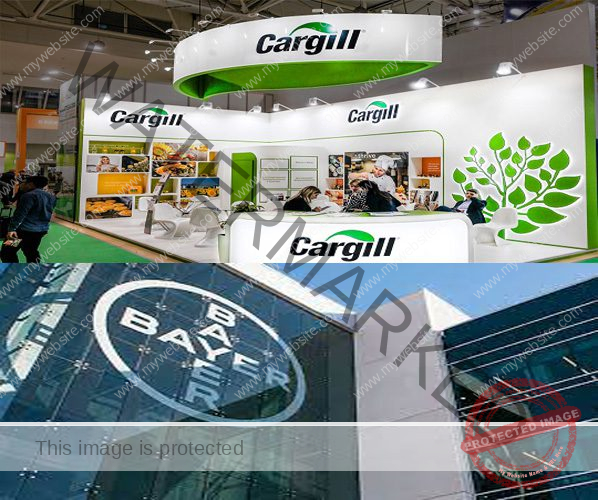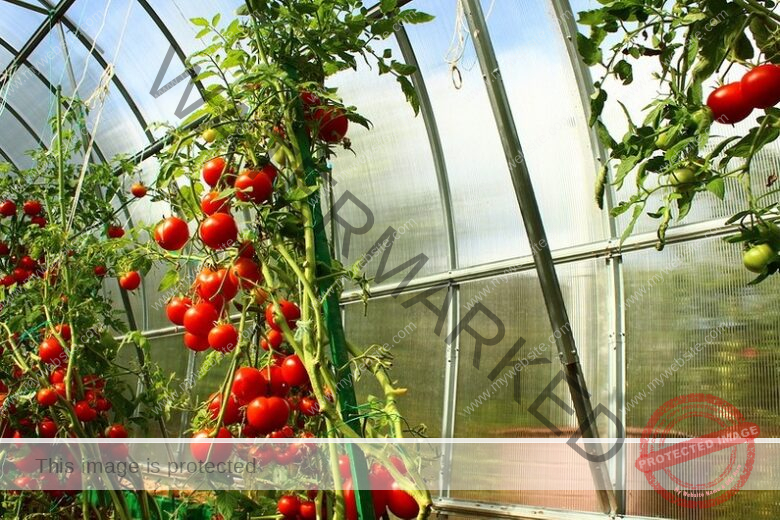Drip irrigation is a highly efficient watering technique that has revolutionized agriculture in Kenya.
This system involves the use of a network of tubes or pipes with small holes or emitters that allow water to drip slowly and directly onto the roots of plants.
By delivering water directly to the plant’s roots, this method minimizes evaporation and reduces water loss due to runoff or overspray.
Drip irrigation is particularly beneficial in arid and semi-arid regions where water is scarce, and it enables farmers to grow crops more efficiently with less water.
Kenya’s agriculture sector has embraced this system, with many farmers adopting it to improve crop yields, reduce water usage and increase profits.
Drip Irrigation System Kenya
Drip irrigation is a popular watering technique in Kenya, especially in regions with limited water supply.
This system uses a network of tubes or pipes with small holes or emitters that release water slowly and directly onto the plant’s roots.
Read Also: Drip Irrigation System in Sri Lanka
This method reduces water wastage due to evaporation, runoff, and overspray, making it an ideal solution for arid and semi-arid regions.
Drip irrigation has revolutionized agriculture in Kenya, enabling farmers to cultivate crops with minimal water usage, increase yields, and improve profitability.
This technique is eco-friendly, cost-effective, and sustainable, and its adoption is crucial for enhancing food security and promoting sustainable agriculture in Kenya.
Read Also: Drip Irrigation System in South Africa
Types of Drip Irrigation Systems in Kenya
Drip irrigation is a highly efficient and sustainable watering technique that has revolutionized agriculture in Kenya.
There are different types of drip irrigation systems that farmers can choose from, depending on their crops, water availability, soil type, topography, and climate conditions.
#1. Surface Drip Irrigation
Surface drip irrigation is the most common type of drip irrigation used in Kenya.
This method involves laying the drip lines on the soil surface and delivering water directly to the roots of plants.
Read Also: Drip Irrigation System In Israel
The drip lines are typically made of polyethylene and have emitters that regulate the flow of water. Surface drip irrigation is suitable for a wide range of crops that require frequent watering, such as vegetables, fruits, and flowers.
One of the advantages of surface drip irrigation is that it allows for precise water application, ensuring that plants receive the right amount of water at the right time.
This results in improved crop yields, quality, and uniformity. Surface drip irrigation is also easy to install and manage, making it a cost-effective option for smallholder farmers.
Read Also: Drip Irrigation System in Greenhouse
However, surface drip irrigation can be affected by wind, evaporation, and soil erosion, which may lead to water wastage.
Wind can displace the drip lines and affect water distribution, while evaporation can cause water loss before it reaches the plants. Soil erosion can also expose the drip lines and affect their performance.
To prevent these issues, farmers should choose the right emitter spacing, use mulching to reduce evaporation, and protect the drip lines from wind and soil erosion.
Read Also: List of Irrigation Schemes In Ghana
#2. Subsurface Drip Irrigation
Subsurface drip irrigation is a type of drip irrigation system that involves burying the drip lines below the soil surface and delivering water directly to the roots of plants.
This method reduces water evaporation and soil erosion, making it a highly efficient and sustainable option for watering crops.
Unlike surface drip irrigation, subsurface drip irrigation does not wet the soil surface, which reduces the risk of weed growth and soil compaction.
This method is suitable for crops that require less frequent watering, such as trees and shrubs. It can also be used in fields with sloping topography or sandy soil, where surface irrigation methods are less effective.
Read Also: List of Irrigation Schemes in Africa
By delivering water directly to the roots of plants, subsurface drip irrigation ensures that water is used efficiently and reduces the risk of water wastage.
However, subsurface drip irrigation can be affected by soil clogging and root intrusion, which may lead to system failure.
Soil clogging can occur when soil particles and minerals accumulate in the drip lines, reducing water flow and distribution.
Root intrusion can occur when roots grow into the drip lines, blocking water flow and causing system damage.
These issues can be prevented by using high-quality filters, flushing the system regularly, and choosing crops with less aggressive root systems.
#3. Micro Sprinkler Irrigation
Micro sprinkler irrigation is a type of drip irrigation system that involves using small sprinklers to deliver water to plants.
These sprinklers are placed above the ground and spray water in a circular pattern, wetting the soil and plants’ foliage.
This method is suitable for crops that require frequent watering, such as vegetables, fruits, and flowers. It is also effective in reducing water evaporation and wind drift, making it a good option for arid and semi-arid regions where water is scarce.
One of the advantages of micro-sprinkler irrigation is that it can be used in a wide range of crops, including those that require overhead irrigation.
It can also be customized to meet the specific needs of different crops, such as changing the flow rate, spray pattern, and duration of watering.
This flexibility allows farmers to optimize water usage, reduce water wastage, and maximize crop yields.
However, micro sprinkler irrigation may not be suitable for crops that are susceptible to fungal diseases, such as tomatoes and cucumbers.
The water droplets produced by the sprinklers can create a humid environment that encourages fungal growth, leading to crop damage and yield losses.
To prevent this, farmers should ensure proper spacing between the sprinklers, avoid overwatering, and apply fungicides as needed.
Best Practices of using Drip Irrigation System in Kenya
- Regular maintenance of the system, including checking for leaks and blockages, and replacing worn-out parts.
- Proper installation and placement of the drip lines, ensuring that they are at the right depth and distance from the plants.
- Ensuring that the water source is clean and free from contaminants.
- Using high-quality filters and pressure regulators to ensure consistent water flow and distribution.
- Monitoring the soil moisture levels to determine the optimal watering schedule.
Factors to Consider in Choosing a Drip Irrigation System
- Type of crops to be grown and their water requirements.
- Soil type and topography of the land.
- Water source and availability.
- Climate and weather conditions.
- Budget and cost-effectiveness.
Measures to Maintain Drip Irrigation System in Kenya
- Regularly inspect the system for leaks, blockages, and other issues.
- Clean and flush the system to prevent clogging.
- Replace worn-out or damaged parts.
- Use high-quality filters and pressure regulators.
- Monitor soil moisture levels and adjust watering schedule as needed.
Tips to Select the Right Irrigation System in Kenya
- Consider the water requirements of your crops.
- Choose a system that is suitable for your soil type and topography.
- Consider the availability and quality of your water source.
- Take into account the climate and weather conditions in your area.
- Factor in the cost and budget.
Advantages of Drip Irrigation System in Kenya
- Efficient water use, reducing water waste and improving crop yields.
- Reduced labor costs and time spent on watering crops.
- Precision watering, delivering water directly to the roots of plants.
- Reduced weed growth and soil erosion.
- Suitable for a wide range of crops and soil types.
Disadvantages of Drip Irrigation System in Kenya
- Initial installation costs can be high.
- System maintenance and repairs can be time-consuming and costly.
- Risk of soil clogging and root intrusion.
- Requires a reliable source of electricity or solar power to operate.
- May not be suitable for crops that require flooding or overhead watering.
Costs of Drip Irrigation System in Kenya
The costs of drip irrigation systems in Kenya can vary depending on factors such as the size of the farm, the type of system, and the quality of materials used.
The cost of installation can range from KES 20,000 to KES 150,000 per acre, with additional costs for maintenance, repairs, and replacement parts.
Importance of Drip Irrigation Systems in Kenya
Drip irrigation systems are important in Kenya because they offer a sustainable and efficient solution for irrigating crops in areas with limited water resources.
They can help farmers improve crop yields and quality, reduce labor costs, and conserve water.
More so, drip irrigation systems can be used in both smallholder and large-scale farming operations, making them accessible to farmers of all sizes and improving food security in the country.
Amiran Drip Irrigation Kit Price
The Amiran Drip Irrigation Kit is a popular and high-quality drip irrigation system in Kenya.
The price of the Amiran drip irrigation kit varies depending on the size and components included in the kit.
For example, a basic Amiran kit for a quarter-acre farm can cost around KES 25,000, while a larger kit for one acre can cost around KES 80,000.
KARI Drip Kit
The Kenya Agricultural and Livestock Research Organization (KALRO) has developed a drip irrigation kit known as the KARI Drip Kit.
This kit is designed specifically for smallholder farmers and is affordable and easy to use. The KARI Drip Kit includes all the necessary components for a basic drip irrigation system, such as drip lines, emitters, and a filter.
The price of the KARI Drip Kit ranges from KES 5,000 to KES 10,000 depending on the size of the kit.
1 Acre Drip Irrigation Kit Price in Kenya
The price of a one-acre drip irrigation kit in Kenya varies depending on the brand, components, and quality of the system.
A basic kit can cost around KES 60,000, while a more advanced system can cost up to KES 150,000.
It is important to consider the specific needs of your crops and soil type when selecting a drip irrigation kit.
Quarter Acre Drip Irrigation Kit
A quarter-acre drip irrigation kit is suitable for smallholder farmers who want to irrigate their crops efficiently and effectively.
A basic quarter-acre kit typically includes drip lines, emitters, a filter, and fittings, and can cost around KES 25,000.
However, the price can vary depending on the brand and quality of the components included in the kit.
Drip Irrigation Kit for 1 Acre
A drip irrigation kit for one acre typically includes drip lines, emitters, a filter, fittings, and other components necessary for efficient irrigation.
The price of the kit can vary depending on the brand and quality of the components included in the kit.
A basic kit can cost around KES 60,000, while a more advanced system can cost up to KES 150,000.
Drip Irrigation System in Nairobi
Drip irrigation systems are widely used in Nairobi to irrigate crops and landscape gardens.
The availability of reliable water sources and the high cost of manual labor make drip irrigation an attractive option for farmers and landscapers.
There are many suppliers of drip irrigation systems in Nairobi, ranging from large international companies to local distributors.
5 Acre Drip Irrigation System
A drip irrigation system for five acres typically includes drip lines, emitters, filters, fittings, and other components necessary for efficient irrigation.
The price of the system can vary depending on the brand and quality of the components included in the kit.
A basic kit can cost around KES 200,000, while a more advanced system can cost up to KES 500,000.
Bucket Drip Irrigation
Bucket drip irrigation is a low-cost and simple method of drip irrigation that is suitable for smallholder farmers in Kenya.
This method involves filling buckets or containers with water and connecting them to drip lines using hoses and fittings.
The buckets are elevated to create gravity flow, and the water drips slowly into the soil around the plants.
Bucket drip irrigation can be a cost-effective solution for small-scale farming, and the cost can range from KES 500 to KES 2,000 per acre.
Conclusion
The adoption of drip irrigation systems has significantly transformed Kenya’s agriculture sector. This efficient watering technique has enabled farmers to grow crops with minimal water usage, reducing water wastage and improving crop yields. Drip irrigation is a viable solution for water-scarce regions and has the potential to enhance food security and increase farmers’ incomes.




